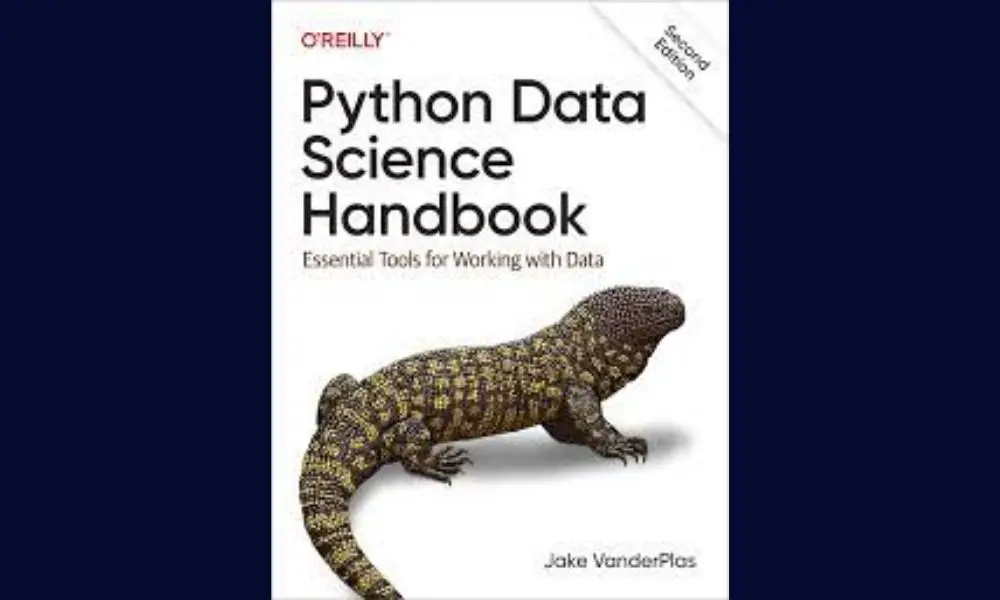Python Data Science Handbook: Essential Tools for Working with Data by Jake VanderPlas
Table of Contents
Introduction
The world of data science is constantly evolving, with Python emerging as a premier tool for researchers due to its robust libraries for data manipulation, analysis, and visualization.
In this ever-changing landscape, the “Python Data Science Handbook: Essential Tools for Working with Data” by Jake VanderPlas stands as a comprehensive resource that brings together essential tools and techniques under one roof.
Whether you’re a seasoned data scientist or a beginner looking to dive into the realm of data analysis, this book offers a wealth of insights and practical guidance.
Book Summary
VanderPlas’s book serves as a virtual treasure trove of knowledge, guiding readers through the intricacies of data science using Python. The author covers a diverse range of topics, starting from the basics and gradually delving into advanced concepts. The book’s structure ensures a smooth progression, beginning with foundational components like NumPy and Pandas, and then extending to more intricate topics such as data visualization with Matplotlib, and machine learning using Scikit-Learn.
Book Information
- Title: Python Data Science Handbook: Essential Tools for Working with Data
- Author: Jake VanderPlas
- Publisher: O’Reilly Media
- Publication Date: January 3, 2017
- Pages: 546
- Format: Paperback, Kindle, Audible
- Rating: 4.6 out of 5
Overview of the Book
The book unfolds in a logical sequence, enabling readers to build a solid foundation in Python data science. VanderPlas skillfully introduces readers to tools like IPython and Jupyter, providing them with computational environments to harness the power of Python. The book then progresses to cover essential libraries like NumPy, which offers efficient data array storage and manipulation. Pandas, another vital component, is explored for efficient labeled and columnar data manipulation.
Key Concepts
This book doesn’t merely scratch the surface; it delves into critical data science concepts. From understanding and manipulating data to creating insightful visualizations, readers are exposed to essential practices that empower them to gain actionable insights. The coverage of Scikit-Learn adds an extra dimension, enabling readers to implement well-established machine-learning algorithms with Python’s clean and efficient implementations.
Writing Style and Clarity
VanderPlas’s writing style is a gem in itself. The author’s knack for explaining complex concepts in a clear and concise manner makes the book an invaluable resource. Whether you’re familiar with Python or not, the author’s approach ensures that you can grasp the concepts without feeling overwhelmed.
Strengths of the Book
One of the book’s notable strengths is its comprehensive coverage. It starts with the basics and gradually elevates the reader’s understanding to advanced levels. The practical examples provided throughout the book enable readers to not only comprehend the concepts but also implement them effectively. VanderPlas’s approach encourages active learning, making it an engaging read for both newcomers and seasoned professionals.
Areas for Improvement
While the book is an exceptional resource, some readers might find themselves wishing for a bit more technical depth in certain sections. Additionally, incorporating more real-world datasets and showcasing their application could further enhance the book’s practicality.
Who Should Read This Book
The “Python Data Science Handbook” is a must-read for a variety of audiences. If you’re a newcomer to data science, this book serves as an excellent introduction to the tools and techniques essential for the field. For experienced practitioners, the book offers a comprehensive reference guide, enabling them to expand their skills and stay updated with the latest practices.
Conclusion
In the rapidly evolving world of data science, the “Python Data Science Handbook” by Jake VanderPlas stands as an essential companion. By covering a comprehensive array of tools, techniques, and concepts, the book equips readers with the skills necessary to tackle data-related challenges. Whether you’re a seasoned professional or a budding enthusiast, this book is a treasure trove that promises to enhance your data science journey.
FAQ
Q1: Is this book suitable for beginners?
A1: Absolutely. The book starts with foundational concepts and gradually progresses to more advanced topics, making it accessible to beginners while offering value to experienced practitioners.
Q2: Does the book include practical applications and case studies?
A2: Yes, practical examples and case studies are woven throughout the book. These real-world applications help readers understand how to apply the concepts in practice.
Q3: Does the book cover ethical considerations in data science?
A3: While ethical considerations are not a central focus of the book, they are important in data science. Readers can gain insights into ethical practices by exploring related resources.
Q4: Is the book focused on specific technologies?
A4: The book predominantly uses Python for data science tasks. While it’s Python-centric, the concepts discussed are applicable across various data science technologies.
Q5: Does the book include hands-on projects?
A5: While the book provides practical examples, it doesn’t extensively delve into hands-on projects. However, readers can explore additional resources for project-based learning.
